
System design: Facebook Privacy

“Our mission is to reduce privacy people problems for Facebook users by putting privacy policies and principles into practice and creating efficient processes for product teams.”
My Role
As the lead of the Facebook Privacy design team, I developed clear, user-centered design solutions to address complex privacy challenges, navigating legal and product constraints. I collaborated proactively with cross-functional teams to strategize and execute impactful projects, working closely with Meta teams like Privacy Central, Instagram, and WhatsApp to ensure consistent privacy solutions across platforms. Leveraging my creativity, I transformed complex privacy features into intuitive, user-friendly experiences.
Context

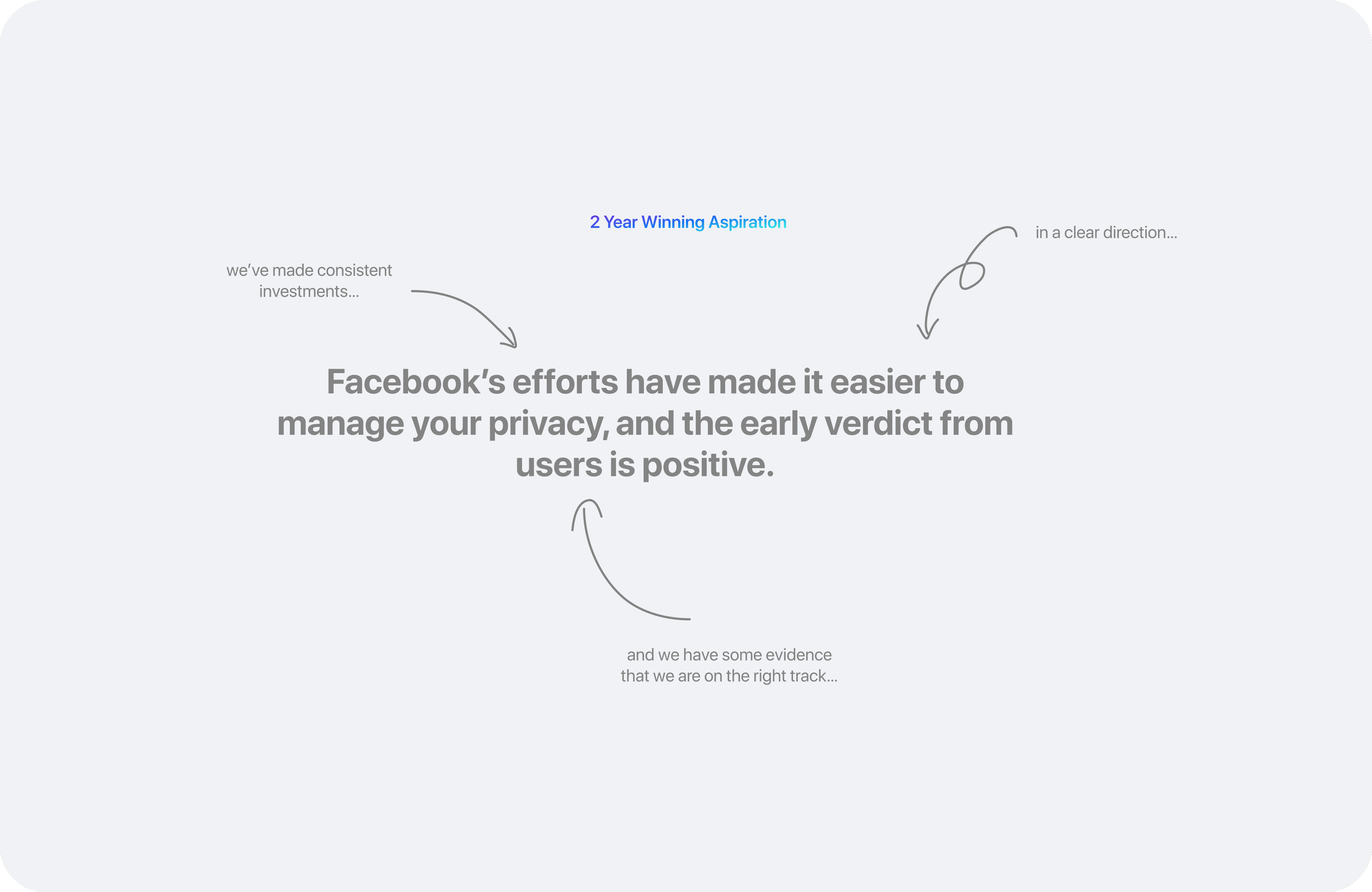

Strategic


Unified Settings Framework
Previously, Facebook's privacy settings were inconsistent across the platform, making it difficult for users to navigate and understand their options. Settings for posts, stories, Marketplace, and Dating were presented in different styles and formats, increasing the risk of user confusion and potential privacy issues. This lack of cohesion led to high maintenance costs and delayed updates.
As a major impact on the privacy team, I led the development of the Unified Settings Framework (USF) to address this system-level challenge. I provided flexible, user-centered design solutions, including a new information architecture (IA), modular Bloks components, and engaging interaction behaviors. My work helped transition the majority of users to a consistent settings experience, now representing 93% of all Facebook Settings mobile impressions. Additionally, I created the USF Settings Guideline, which will serve as a blueprint for scaling Facebook’s settings system across platforms.
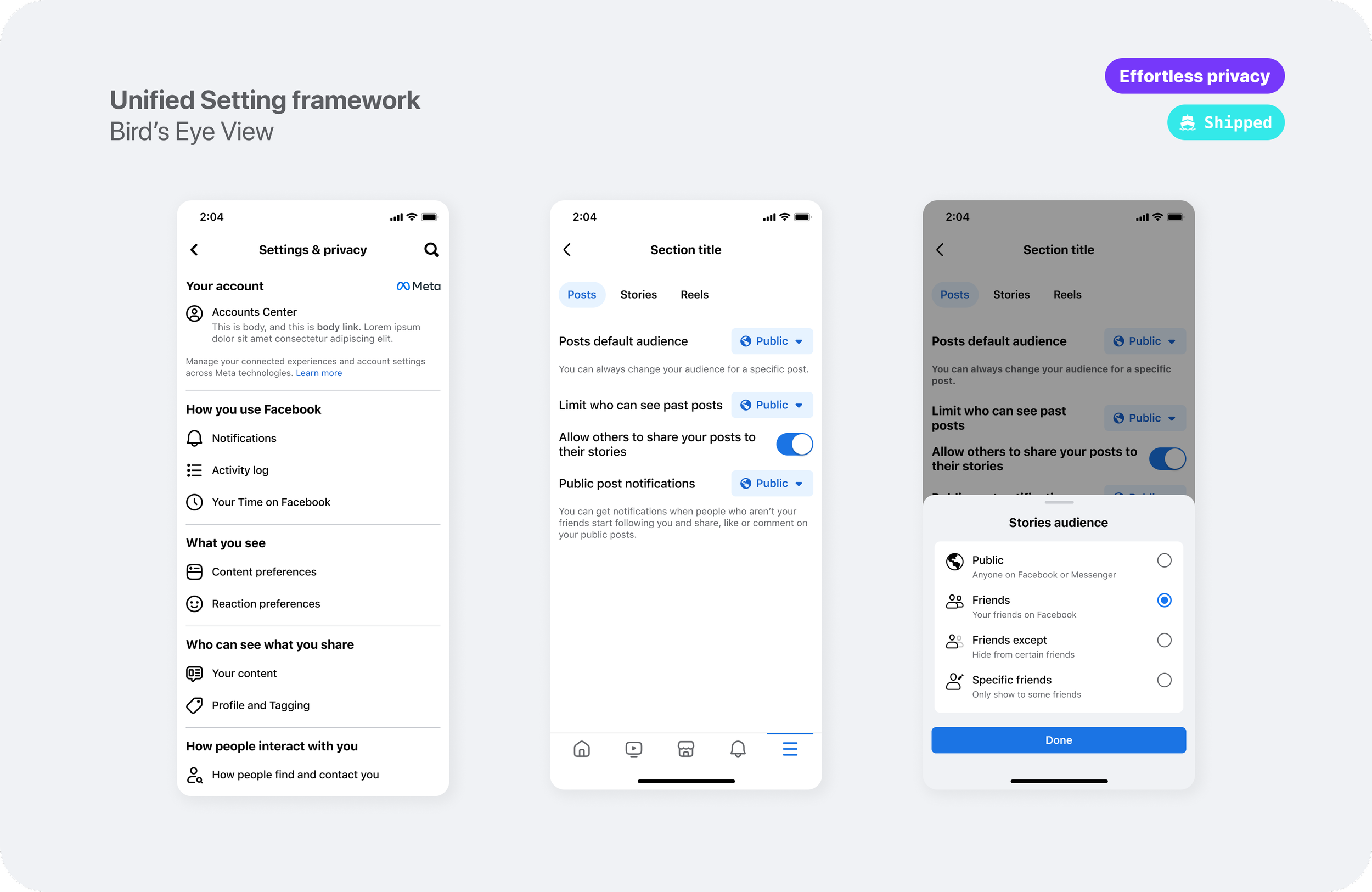
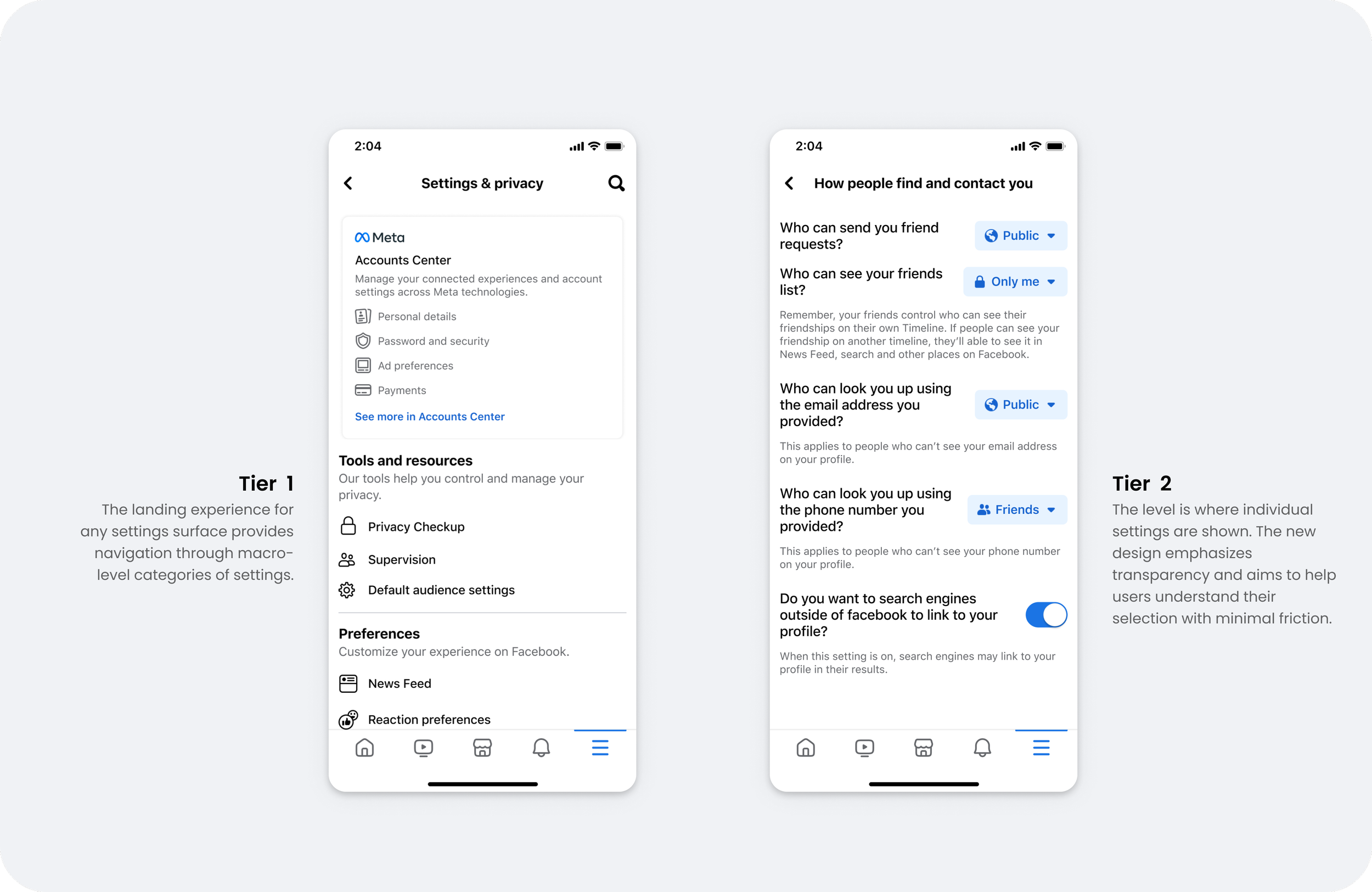
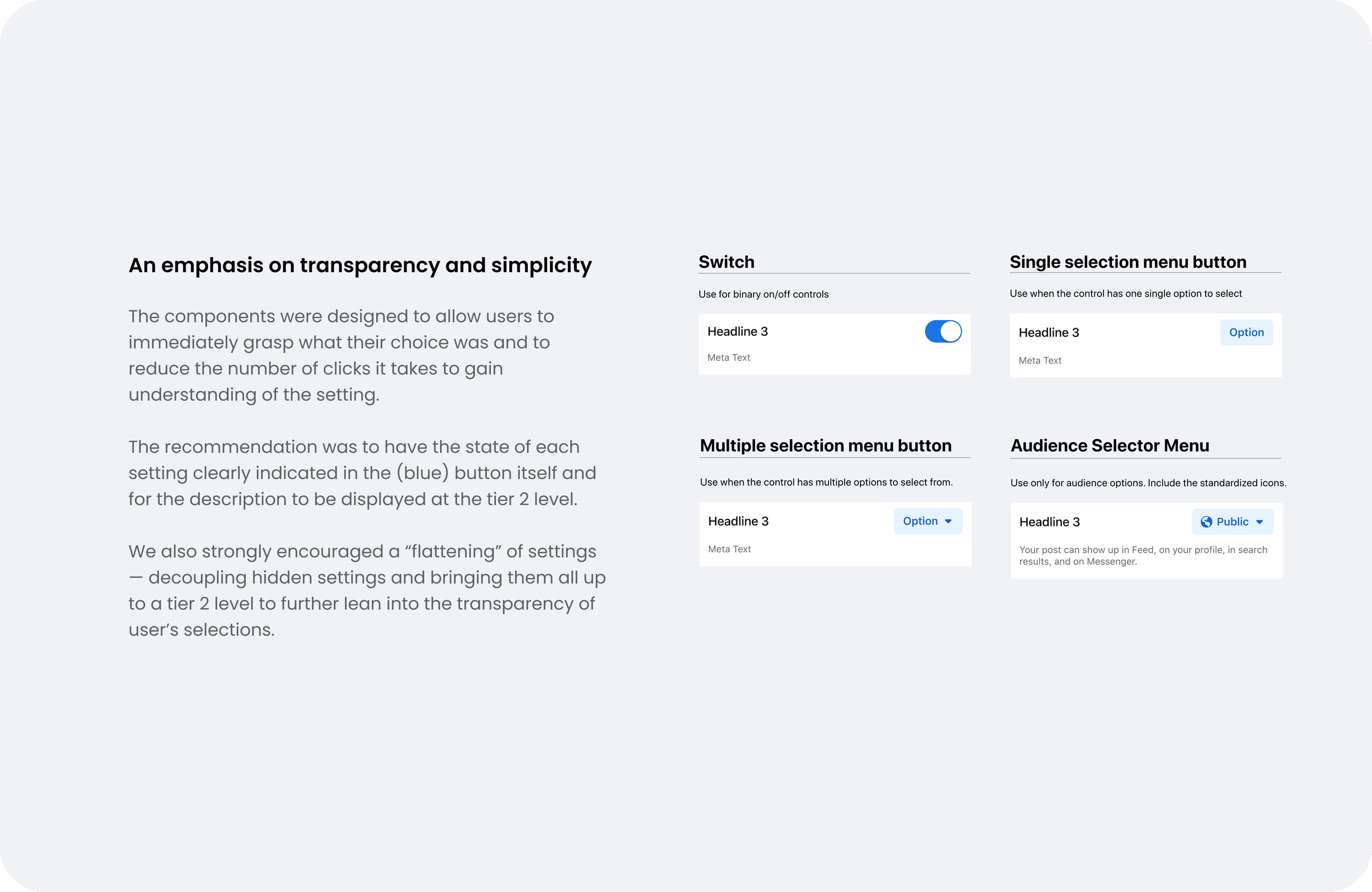


User Value:
Enabled the search function for settings, resulting in a 5.5% increase in impressions and a 10.2% increase in setting changes when search results were linked to the parent category for context.
Provided quicker access to settings and connected the USF with the Facebook Help Center, doubling the number of users assisted daily while maintaining a 30% action rate.
Improved responsiveness: Screen load times under 1 second increased from 39% to 68.9%, while load times under 2 seconds improved from 79% to 90.5%, aligning with Facebook’s standard screen load rates (>85%).
Developer Efficiency:
Reduced average development time for settings from 2.5 days to 0.7 days.
No additional activity needed when partners adapt to USF Bloks.
Debugging for USF settings became more manageable, streamlining development processes.
Regulatory Response & Risk Reduction:
Enabled 75% faster response to regulations.
Addressed accessibility (AX) issues at scale with no extra cost to partner teams.
USF’s Test Suite prevents up to 2.7 SEVs per month.
Maintained over 90% test coverage for all settings on USF, ensuring high-quality, compliant updates.
Privacy Controls Simplification
Users struggle to find and use our settings and controls. In a recent study, 10% of users reported being unable to locate the account setting they wanted to change within the last 7 days. This indicates we’re falling short of both user and regulatory expectations. Those who encountered these difficulties were more likely to reduce engagement compared to those who didn’t. This presents an opportunity to boost user confidence in our ability to respect their privacy and content preferences, ensuring they feel safe and secure while engaging on the platform.
Simplify (consolidate and deprecate) settings and controls and unify the experience for increased findability, improved understanding and actionability to increase people’s confidence that they have agency over their experiences.
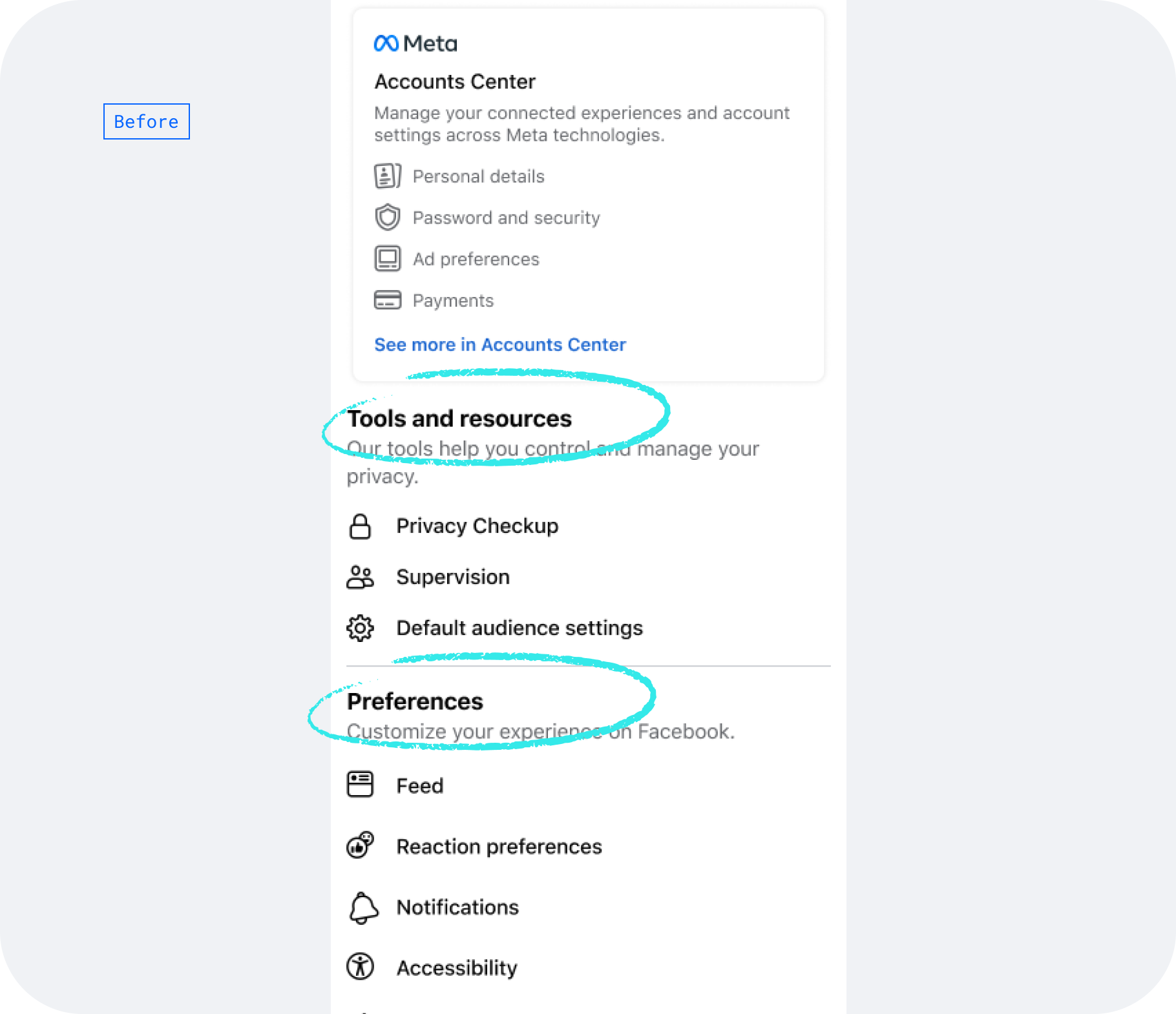

Using humanistic language helps us clearly group settings around core jobs, aligns with users’ mental models, and ensures people can find the settings they need quickly and easily, in the places they expect and increase the predictability.
Settings Homepage Before Vs. After
Based on insights from UXR, we removed the “Forks in the Road” navigation, introduced sub-navigation tabs, and applied USF consistency patterns. This design approach not only simplifies the user experience but is also becoming a standard, reusable pattern in our efforts to reduce the total number of components.
Content Preference Before ( Forks in the road ) Vs. After ( Sub-navigation)
The current Facebook Time Spent experience is unclear, and the time management tool was inconsistent across Meta products like Instagram and Supervision. Based on insights from UXR, we removed the “Forks in the Road” navigation, added sub-navigation tabs, and applied USF consistency patterns. We reduced duplicated entry points (e.g., Activity Log, Feed Management, Notification Settings) and simplified the flow. This approach enhances usability, helping users quickly manage their preferences and revisit them with ease.
‘Your time on Facebook’ Before Vs. After
Bundled Settings
Currently, when users create new profiles on Facebook (e.g., SOAPS or ProMode), they inherit the settings from their main profile, which doesn’t align with the different intent behind these new profiles. This often leads to issues like sharing to the wrong audience, as users are unaware they’re using the same settings. With over 100 settings to navigate, this creates unnecessary complexity.
To simplify the onboarding experience, we plan to introduce “bundled” settings that match users' intent. These bundles—Creator and Friends and Family—will help users quickly identify the right settings and make adjustments with ease, reducing complexity and improving control.
Feature details
Youth default settings
Starting today, all users under 16 (or 18 in certain countries) will be defaulted into more private settings upon joining Facebook. We’ll also encourage existing teen users to update their settings to enhance privacy. In the first 3 weeks post-launch, over 3.2M teens have used our flow to update their settings.
This is part of our commitment to protecting young people from harm and creating a safe, age-appropriate environment on Facebook.
Audience Selector Unification
Users struggle to select the intended audience for their content on Facebook due to inconsistencies in the audience selector UI and behavior. As a result, users risk sharing content with unintended audiences, leading to unwanted views and interactions. In surveys, 24% of respondents reported having unwanted viewers see their posts. Additionally, 21% accidentally post publicly to their feed, and 29% do the same with their stories, despite not intending to.
Before: 1. Inconsistency UI and interaction patterns 2. Entry point low discoverability 3. Full screen high intrusive settings 4. Inconsistent language and audience labels
After: Audience privacy selector
We developed an intuitive, consistent, and flexible audience selection pattern that enables users to easily manage their audience settings, reducing the risk of unwanted content exposure and allowing them to share on Facebook with confidence. We are actively testing, iterating, and collaborating with multiple teams across Facebook. Early results show a significant increase in daily active users (DAU), and we expect similar positive outcomes across other surfaces. The Audience Privacy Selector introduces a standardized, consistent approach to audience selection. Additionally, I created the Audience selector Guideline to ensure scalability of the system.